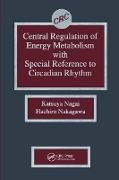Read more
List of contents
Preface. HOMEOSTATIC CONTROL OF ENERGY METABOLISM. HISTORICAL BACKGROUND OF HOMEOSTASIS. HOMEOSTATIC CONTROL OF ENERGY METABOLISM. Why Should Homeostasis of the Level of Blood Glucose be Maintained? Glycogen Storage in the Liver as a Source of Energy to the Brain. Food Intake. Gluconeogenesis. ROLE OF THE HYPOTHALAMUS IN CENTRAL REGULATION OF ENERGY METABOLISM. Hypothalamic Control of Food Intake. Hypothalamus and Glucose Metabolism. Hypothalamic Control of Fat Metabolism. Hypothalamic Control of Heat Production in Brown Adipose Tissue. Functional Relationship between the Hypothalamus and the Autonomic Nervous System in Regard to Energy Metabolism. INVOLVEMENT OF THE AUTONOMIC NERVOUS SYSTEM IN THE REGULATION OF ENERGY METABOLISM. TIME-DEPENDENT HYPERGLYCEMIC RESPONSE TO ENERGY DEFICIENCY IN THE BRAIN. Hyperglycemic Responses to Intracranial Injections of 2DG. Time Dependency of Hyperglycemic Responses to 2DG, MA, and GL Injections. Glucagon as a Causative Factor for the Hyperglycemic Response to 2DG. INVOLVEMENT OF THE ADRENAL MEDULLA IN THE HYPERGLYCEMIC RESPONSE. Suppression of Insulin Secretion by Intracranial Injections of 2DG, MA, and GL. EFFECTS OF ADRENERGIC BLOCKERS ON THE HYPERGLYCEMIC RESPONSE. CIRCADIAN RHYTHMS AND THEIR SIGNIFICANCES IN SURVIVIAL OF ANIMALS. TIME DEPENDENCY AND CIRCADIAN RHYTHMS. The Effects of Changing Environmental Factors on the Lives of Animals. Food Intake. CIRCADIAN RHYTHMS OF ANIMAL BEHAVIORS. Water Intake. Sleep and Wakefulness. Locomotive Activity. DAILY CHANGES IN METABOLISM. Energy Consumption and Respiratory Quotient. Enzyme Activities. Autonomic and Endocrinological Regulations of Energy Metabolism. The Autonomic Nervous System and Daily Changes in PEPCK Activity in a Normal Environment. Generation of Daily Change in Gluconeogenesis in Close Relation with Food Intake. CIRCADIAN RHYTHMS OF ENDOCRINE FUNCTIONS. Corticosteroids. Insulin and Glucagon. BODY TEMPERATURE. SUPRACHIASMATIC NUCLEUS AS A SITE OF THE CIRCADIAN CLOCK.
About the author
Nagai, Katsuya||
Summary
This excellent book describes the roles of the suprachiasmatic nucleus (SCN) of the hypothalamus as a regulatory center of homeostatic mechanism and a circadian oscillator in mammals, including humans

